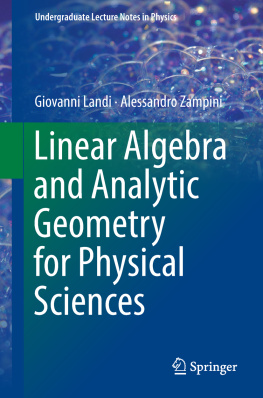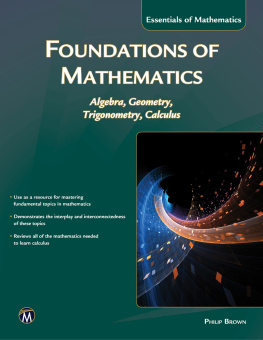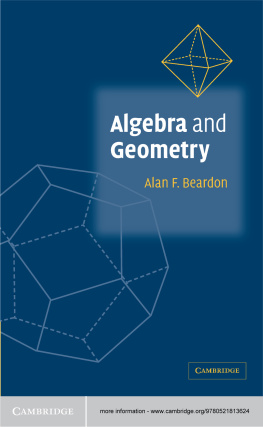Sergei Kurgalin - Algebra and Geometry with Python
Here you can read online Sergei Kurgalin - Algebra and Geometry with Python full text of the book (entire story) in english for free. Download pdf and epub, get meaning, cover and reviews about this ebook. year: 2021, publisher: Springer International Publishing, genre: Home and family. Description of the work, (preface) as well as reviews are available. Best literature library LitArk.com created for fans of good reading and offers a wide selection of genres:
Romance novel
Science fiction
Adventure
Detective
Science
History
Home and family
Prose
Art
Politics
Computer
Non-fiction
Religion
Business
Children
Humor
Choose a favorite category and find really read worthwhile books. Enjoy immersion in the world of imagination, feel the emotions of the characters or learn something new for yourself, make an fascinating discovery.
- Book:Algebra and Geometry with Python
- Author:
- Publisher:Springer International Publishing
- Genre:
- Year:2021
- Rating:5 / 5
- Favourites:Add to favourites
- Your mark:
- 100
- 1
- 2
- 3
- 4
- 5
Algebra and Geometry with Python: summary, description and annotation
We offer to read an annotation, description, summary or preface (depends on what the author of the book "Algebra and Geometry with Python" wrote himself). If you haven't found the necessary information about the book — write in the comments, we will try to find it.
Algebra and Geometry with Python — read online for free the complete book (whole text) full work
Below is the text of the book, divided by pages. System saving the place of the last page read, allows you to conveniently read the book "Algebra and Geometry with Python" online for free, without having to search again every time where you left off. Put a bookmark, and you can go to the page where you finished reading at any time.
Font size:
Interval:
Bookmark:
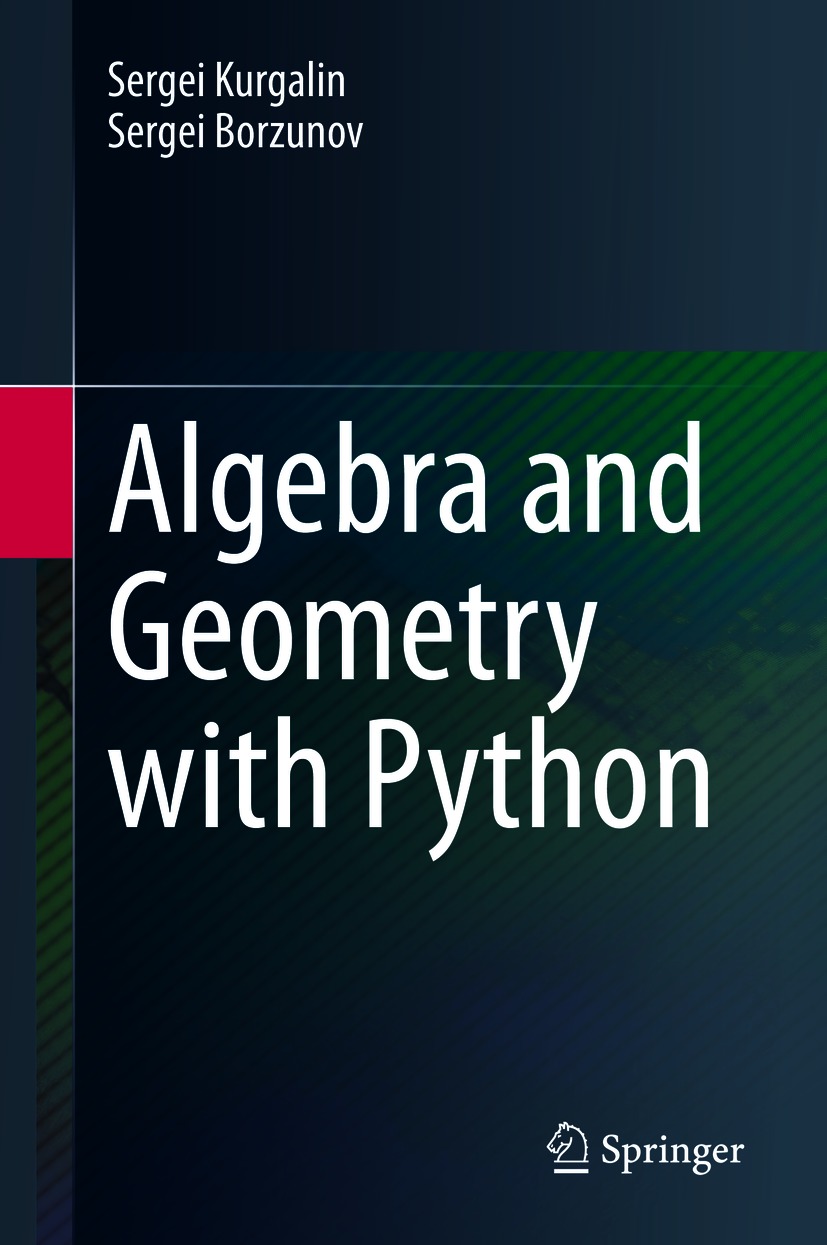

This Springer imprint is published by the registered company Springer Nature Switzerland AG.
The registered company address is: Gewerbestrasse 11, 6330 Cham, Switzerland
The rapid development of computing places special demands on the training of young specialists in this field. The complexity of the problems that must be solved to satisfy the needs of science, technology, industry and the economy also grows, simultaneously with the rapid growth in the power of modern computer systems. In this connection, we believe that it is essential that computing specialists have fundamental knowledge about the development of the related mathematical frameworks and about how to create methods for solving the above problems.
Algebra and geometry are deemed important areas whose ideas and results are actively used in the development of information systems, as well as in software developed for business projects. The basic notions of algebra are numerical matrices and the methods for working with matrix algorithms. They may be used extensively in scientific and technical problems and in the game industry. The rapid development of game technologies, as well as augmented and alternative reality technologies, means that we must pay special attention to university courses in analytical geometry and linear algebra, pattern properties in 3D space and fast algorithms for working with two- and three-dimensional objects.
Another promising area of application for linear algebra algorithms that has seen rapid development in recent years is Big Data. Analysis of extremely large arrays requires not only knowledge and use of the known methods, but it also issues the challenge to develop new approaches and high-performance algorithms.
This textbook is an introduction to linear algebra and analytical geometry for higher-education students in the natural sciences. It is based on the courses Algebra and Geometry, Analytical Geometry and Fundamental and Computer Algebra, which are taught to first-year students of the Faculty of Computer Sciences at the Voronezh State University. The teaching is meant for theoretical training, as a supplement to the existing textbooks, for practical and laboratory classes, and also for self-study. Going forward, the terms Algebra and Linear Algebra will be considered equivalent, as well as Geometry and Analytical Geometry.
The authors have attempted to lay the material down in the most comprehensible form while not sacrificing strictness in definitions and theorems. The statements (theorems, properties) are accompanied with proofs, or references to specialist literature for advanced study of the materials.
The fundamentals of algebra and geometry are presented in the form most suitable for future specialists in computing. We have considered the basic algorithms for working with matrices, vectors and systems of linear equations. The theoretical material contains solutions of most types of problems and is supplemented with plenty of analysed examples. The end of an example is designated by the symbol  . Each chapter ends with problems for self-study. Many of them are provided not only with full answers but also with detailed solutions. The asterisk sign (*) marks the advanced (enhanced complexity) problems.
. Each chapter ends with problems for self-study. Many of them are provided not only with full answers but also with detailed solutions. The asterisk sign (*) marks the advanced (enhanced complexity) problems.
Apart from the sections traditionally included in algebra and geometry courses, one of the chapters is devoted to the mathematical fundamentals of the modern section of cryptography, namely elliptic curve cryptography. The availability of this chapter will be a connecting link between the mathematical courses and methods applied in practice by the application software developers.
The section about quantum computing is devoted to one of the examples of the application of algebra. It demonstrates that the notions of linear algebra are used for constructing new algorithms, whose computation capacity exceeds the existing ones considerably.
Let us briefly summarize the content of this textbook. The first four chapters are devoted to classical divisions of linear algebra; they consider matrices and determinants, and systems of linear equations; definitions are given for the notion of vector space and the fundamental solution of a homogeneous system. The next few chapters introduce the fundamentals of vector algebra and the coordinate method on a plane and in a 3D space. The following subjects are considered: vectors in three-dimensional space, the equation of a line on a plane, the equation of a plane in space and the equation of a line in space. Second-order curves are analysed. Material on elliptic curves is usually not included in a traditional algebra and geometry course. However, its presence in this book, in our opinion, contributes to a deeper understanding of the methods of linear algebra and analytical geometry and provides an example of the implementation of such methods for solving problems in theoretical and practical cryptography.
We use the Python programming language for illustration of the considered algorithms. This allows us to familiarize readers with implementation at the initial stage of study. Python was selected because it is a universal and widely used general-purpose programming language, suitable for the successful realization of numerical algorithms; Python is a continuously evolving language; and many of its realizations are open source. Python has the necessary tools to automatically check for the errors that might appear in the program code in the process of its creation. The availability of a great number of additional libraries (such as
Font size:
Interval:
Bookmark:
Similar books «Algebra and Geometry with Python»
Look at similar books to Algebra and Geometry with Python. We have selected literature similar in name and meaning in the hope of providing readers with more options to find new, interesting, not yet read works.
Discussion, reviews of the book Algebra and Geometry with Python and just readers' own opinions. Leave your comments, write what you think about the work, its meaning or the main characters. Specify what exactly you liked and what you didn't like, and why you think so.

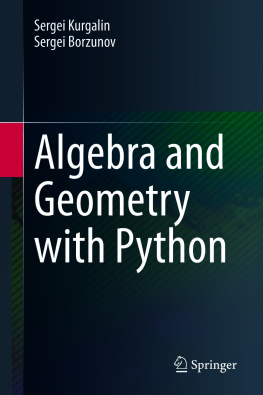
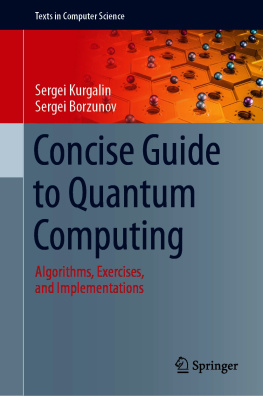
![Sergei Kurgalin [Сергей Кургалин] - The Discrete Math Workbook: A Companion Manual Using Python, 2nd Edition](/uploads/posts/book/307629/thumbs/sergei-kurgalin-s-k.jpg)

